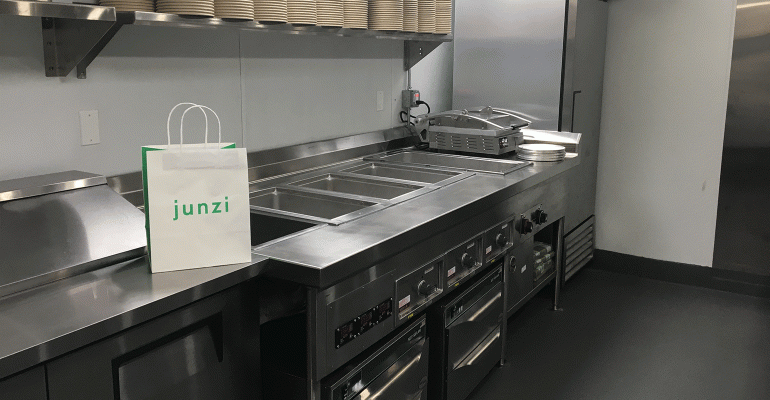Increasing interest in off-premise consumption has fueled the growth of the “virtual restaurant” concept, through which operators offer menus for delivery or pick-up only.
Recent research from the National Restaurant Association found that 60% of all foodservice occasions are now off premise. In addition, 34% of consumers said they are using delivery more than they did a year ago, and 79% said they use delivery at least once per month.
Despite the failure of some high-profile delivery-only kitchens, operators are drawn by the relatively low start-up costs and the freedom these virtual restaurants provide to quickly and easily explore new concepts, menu items and markets.
“You could decide to open a virtual restaurant, and be up and running in 60 days, and you can do it for less than $50,000,” said Alan Moore, a partner in Bytetobite Industries, which operates a network of delivery-only restaurant brands in Southern California. “If you decide to open restaurant down the street, it might take six months and cost you half a million dollars.”
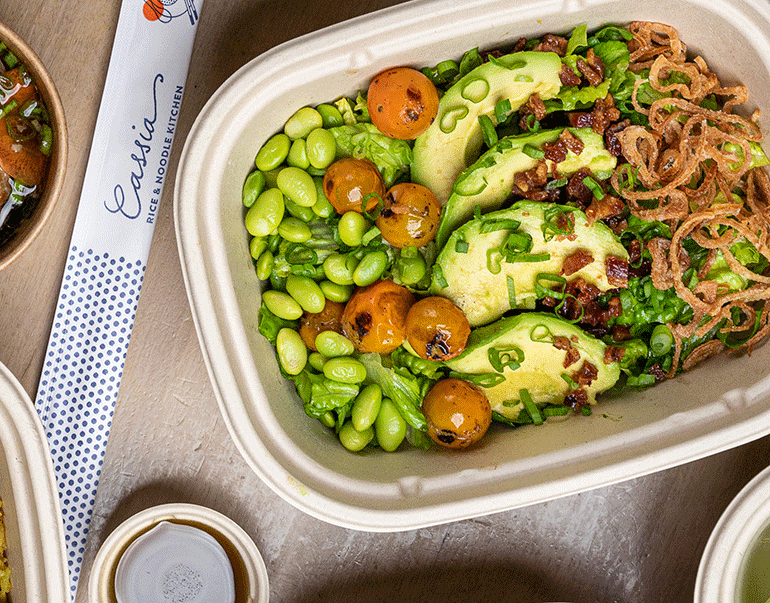
Virtual restaurants pose their own unique challenges, however. Those in the game say menus need to be carefully refined to include only those items that stand up to the rigors of delivery, and processes need to be engineered and tested to optimize throughput and consistency. It is also important for operators to satisfy the demands of third-party delivery companies because scoring well with them on their reviews and other measurements earns restaurants better positioning in the delivery marketplace apps, Moore explained.
“You have to be respectful of their systems and processes,” Moore said.
Here are how some folks are doing it:
Bytetobite Industries, Los Angeles
Moore, who is also a partner in the Los Angeles brick-and-mortar restaurant Cheebo, said Bytetobite was formed with the goal of operating 100 virtual kitchens. The company already operates dozens of delivery-only brands from two Cloud Kitchens locations in the Los Angeles area.
Bytetobite’s virtual brands, available through several third-party delivery services, include Angel Wings, Chuck’s Chicken & Waffles, Oscar’s Pancakes, Hollywood Wraps, Pizzaroo, Sunset Fish & Chips, and others. All are produced in the same kitchens on the same production lines. Each brand is named to give consumers an instant understanding of the menu, and each has its own social media accounts to share photos of the dishes.
Not all of Bytetobite’s delivery-only brands have been successful, but the advantage of operating a virtual concept is that the menu can be tweaked or the entire concept shelved with just a few keystrokes.
“Don’t get hung up believing that you cook the world’s greatest barbecue chicken sandwich,” Moore said. “If it doesn’t sell, move on.”
Lettuce Entertain You Enterprises Inc., Chicago
Chicago-based Lettuce Entertain You Enterprises, or LEYE, which operates, manages or licenses more than 60 casual and upscale concepts, has approached ghost kitchens as a partnership with other brands, which gives it built-in marketing leverage — an important element of the virtual restaurant model.
The company partnered with the Whole30 diet brand for its Whole30 Delivered virtual restaurant, and with Bon Appetit magazine for Bon Appetit, Delivered. Both are also working exclusively with Grubhub as a third-party delivery partner. The virtual concepts operate from two existing LEYE kitchens.
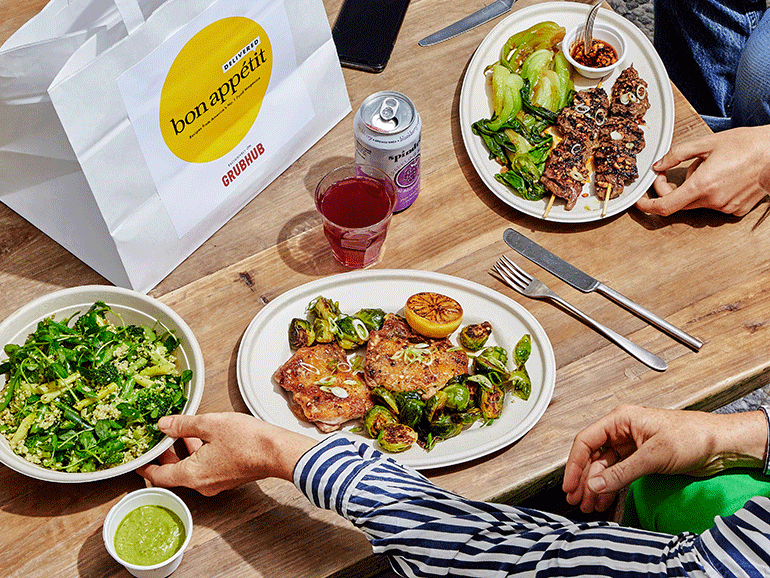
Scott Barton, executive partner at LEYE, said one of the biggest challenges of operating virtual restaurants is conveying the spirit of hospitality that the company seeks to offer in its brick-and-mortar concepts.
“We are working on various ways we can still have a connection with the guest, and elevate their experience a little bit, even though they are not sitting in the dining room,” he said.
Barton said the company is “quite pleased” with the performance of the Whole30 menu, and is excited about the opportunities of the recently launched Bon Appetit concept.
LEYE conducted extensive recipe development and testing for both concepts — including testing dishes in their delivery vessels and allowing them to sit for 20 minutes first to better simulate delivery. The company also worked hard to ensure that the presentation of the dishes in the containers would be pleasing to customers.
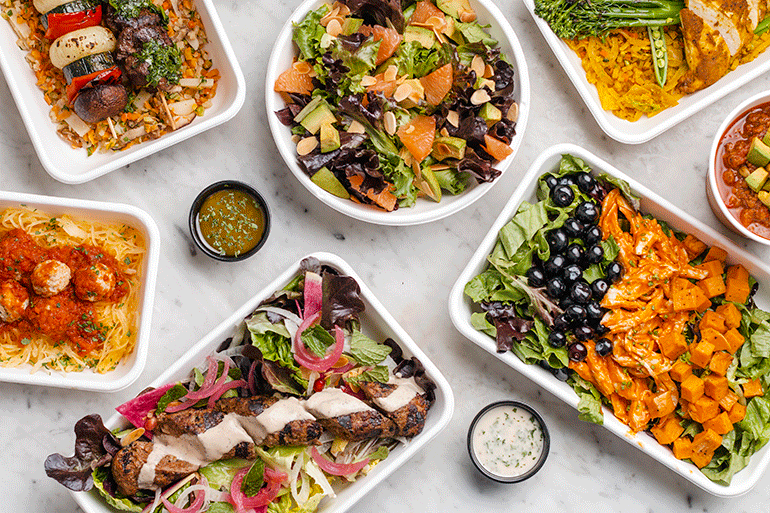
“Through our recipe testing, we steered away from some dishes,” said Barton.
The new concepts have yet to offer dessert — often a logistical challenge for delivery — but Barton said the company hopes to do so eventually.
Cassia Rice & Noodle Kitchen, Los Angeles
Bryant Ng, the chef-owner of Cassia in Santa Monica Calif., in June opened a more casual, delivery- and pickup-only spin-off of his Southeast Asian brasserie. The new concept operates from the same kitchen but with a completely different menu that seeks to offer a more accessible version of his food.
“Chef Bryant wanted to get food ‘to the masses,’ so to speak, at a reasonable price,” said Benjamin Lighton, general manager at Cassia. “He wanted to reach people who wanted to experience his regional cuisine, and just stay in for the night.”
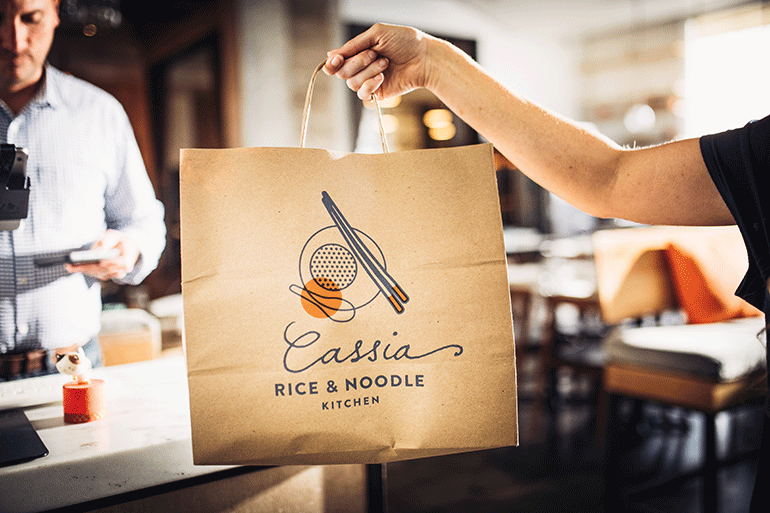
The off-premise concept features average tickets of about $20-$25 per person, compared with slightly higher tickets at Cassia, he said. Many of the entrées at Cassia are in the $30-$45 range.
In order to operate the delivery-and-takeout concept from within the existing kitchen, the company had to rethink the kitchen production line to minimize interference with the dine-in operation, and create processes and procedures for serving both third-party delivery drivers and customers picking up orders.
After experimenting with a few different systems, the restaurant settled on having a delivery specialist use an iPad to relay orders that come in via third-party delivery firms, while the restaurant front desk handles phone orders. The restaurant created a pickup area for delivery drivers at the back door of the restaurant, while take-out orders are picked up at the front desk.
The delivery and takeout operations include three dedicated employees, the line cooks at Cassia are also contributing to the production, Lighton explained.
“Not many people have done this virtual concept,” he said. “There are still little tricks and things we learn every day.”
Lighton described the new concept as “a great success” so far, saying it has driven volumes in line with expectations.
Junzi, New York City
Fast-casual Chinese concept Junzi is among the handful of restaurants opening in New York City’s Zuul Kitchens, a new, 5,000-square-foot facility housing multiple delivery outposts for existing brick-and-mortar brands.
“Making our food more accessible to more people is part of our challenge, because opening one of our flagship stores is very expensive,” said Yong Zhao, co-founder and CEO of Junzi. “Chinese food historically is one of the largest takeout foods in America, so we see a huge opportunity to expand on the delivery side.”
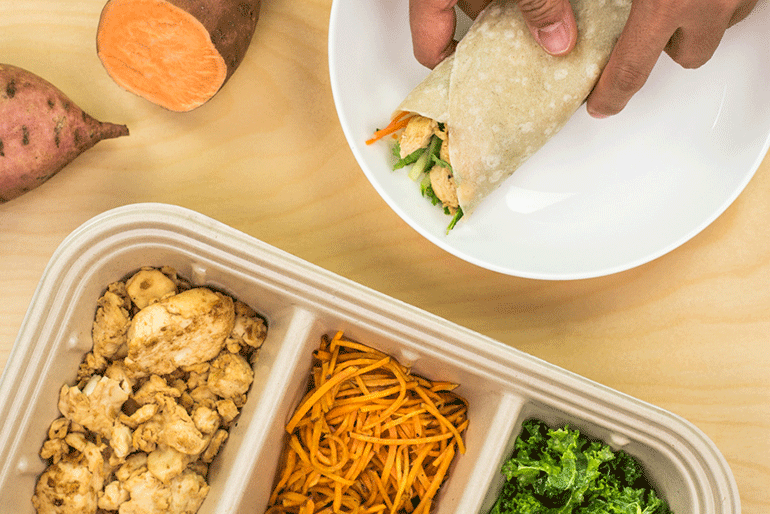
The ghost kitchen concept has long been expanding in China, he said.
“From the very beginning we have been thinking about this,” said Zhao.
Junzi’s new Zuul outpost will offer the same menu at the company’s four traditional locations, but will be produced from a much smaller kitchen — about 250-square feet, compared with 500 or more in the brick-and-mortar restaurants. The company plans to use its other restaurants as commissaries for components of the Zuul location’s menu.
Zhao said the business model calls for lower sales volumes from the Zuul location, but also lower capital expenditures.
“We have to spend time figuring out how to make it more efficient,” he said.
Junzi uses third-party delivery marketplaces but also has its own app where customers place orders. The company will continue to offer delivery from its existing locations, and also hopes to expand to new delivery-only markets as Zuul opens more facilities.
Zhao said that in addition to offering a lower cost structure and allowing it to reach new markets, the virtual kitchen concept will also allow it to test new menu items or even new delivery-only brands without diluting its existing concept.

